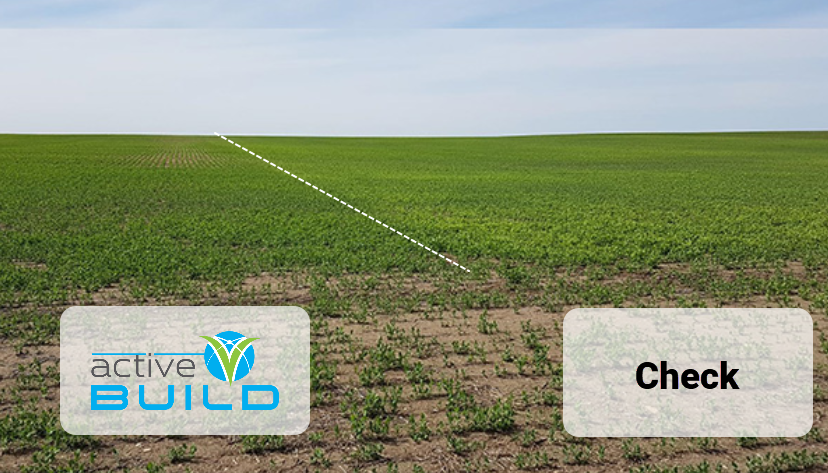
How Foliar Nutrients Minimize Seen and Unseen Herbicide Stress
In an effort to reduce competition and maximize yield in your fields, you rely on an ever-growing list of selective pre and post-emergent herbicides. These products are formulated with active ingredients designed to kill weeds, without causing visible damage to the crop.
But did you know that even though your plants may not show physical signs of damage – they will still undergo unseen herbicide stress as they expend valuable energy to metabolize any herbicide they absorb? (A condition that is known as herbicide-induced photosynthetic suppression).
By tank-mixing a high-quality foliar fertilizer with your herbicide, you can help reduce the effect of herbicide on crops, while providing immediate access to valuable nutrients at a critical growth stage.
Why can crops withstand herbicide when weeds can’t?
Selective herbicides work because the crop has the ability to convert (metabolize) the active ingredient into non-toxic molecules. Weeds, on the other hand, cannot effectively do this and will either die or have their growth significantly suppressed.
Yet, to the plant, even the most “crop-safe” herbicide is still a foreign compound. The plant will consider the herbicide to be a phytotoxin, and take the necessary steps to eliminate the threat.
This applies to all herbicides that may come into contact with a plant, including residual products. Even plants engineered to be resistant to certain herbicides (such as glyphosate) will still treat the herbicide as a toxin. (Much like the human immune system works).
How crops metabolize herbicide.
Crops metabolize herbicide through a four-phase process. In Phase I (Conversion), the plant will try to make the active ingredient in the herbicide more hydrophilic and less phytotoxic (through oxidation, reduction, hydrolysis, oxygenation or hydroxylation). Phase II (conjugation) involves the binding of molecules with sugars, amino acids etc. to increase solubility. At this point, the metabolites have little to no herbicidal activity. In Phase III, these metabolites are transported safely to the vacuole. Finally, in Phase IV metabolites are compartmentalized within the vacuole.[1]
Why herbicides temporarily set back normal plant activity.
Essentially, herbicide reduces the rate of photosynthesis in the crop, which can in turn impact yield potential.[2]
It stands to reason that if a plant is expending its limited energy reserves and nutrients to metabolize herbicide into a safe compound, this is taking away from its day-to-day growth and developmental requirements. This includes the conversion of food to energy (photosynthesis); the development of proteins, lipids, nucleic acids and some simple sugars; and waste elimination.
Herbicides are typically applied when the weed is young and most vulnerable, which coincides with the critical early growth stages of the crop. Wheat, for example, is developing its head between the 2 to 6-leaf stage. Canola often needs energy to help fight-off field beetles at this time. It is well known that pea growth can be set back following the application of a Group 2 herbicide.
This is where a foliar nutrient can aid the crop, and help it get through the “herbicide lag” faster.
How foliar nutrients help offset the effects herbicides have on your crop.
As we learned, plants expend plenty of resources to metabolize the herbicide in their systems to render it harmless.
Some of the more advanced foliar nutrient products are formulated to combat stress and speed up metabolism in the target plant – including photosynthesis. The faster a plant can metabolize herbicide, the sooner it can get back to developing a healthy crop with strong yield potential.
Products with high concentrations of N-P-K and micronutrients such as Mn, Z, B and Mo are particularly valuable in this regard, as these nutrients are required for many of the cell processes associated with cellular growth.
Because they supplement nutrients during the early growth stages, foliar nutrient treatments are shown to improve and enhance an already healthy crop by promoting vigorous regrowth and promoting further yield potential.[3]

Today’s scientifically advanced foliar technologies are formulated to provide timely nutrients and help crops overcome stress – including herbicide stress. Above: Pea crop sprayed at 5-node stage with herbicide plus Active Build™ foliar nutrient vs. herbicide-only check.
Counter the effects of unseen herbicide stress.
Without any physical symptoms to raise alarm bells, it is easy to forget that plants do indeed undergo stress following a selective herbicide application – no matter how safe the product. Adding a trusted foliar nutrient to your tank mix is an easy way to help your crop better deal with the unseen stress caused by herbicide application.
[1] Jorges Pinto de Carvalho, Saul et al. 2009. “Herbicide selectivity by differential metabolism: considerations for reducing crop damages.” Scientia Agricola, vol. 66 No. 1.
[2] Haley, Olivia. 2017. “The role of a foliar nutrient product in relieving herbicide-induced defects in crop growth and development in Zea mays, Triticum aestivum, and Glycine max.” M.Sc. diss., McGill University.
[3] Curley, Steve (ed.). 1994. Midwest Laboratories: Foliar Nutrition Handbook. P. 3.

